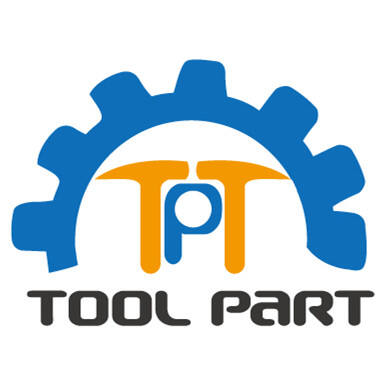Розуміння основної ролі опорних подушок у підготовці поверхні
У сфері фінішної обробки та підготовки поверхонь опорних пластинах відіграють важливу роль як основа для ефективного шліфування, полірування та фінішної обробки. Опорна подушка служить інтерфейсом між електроінструментом і абразивними дисками, забезпечуючи необхідну підтримку та гнучкість для оптимальної обробки поверхні. Незалежно від того, чи ви професійний підрядник, столяр чи ентузіаст ді-я, розуміння опорних подушок є ключовим для досягнення високоякісних результатів фінішної обробки.
Ці універсальні компоненти створені таким чином, щоб витримувати значний тиск і обертальні сили, зберігаючи при цьому форму та функціональність. Рівномірно розподіляючи тиск по абразивному матеріалу, опорні підкладки забезпечують стабільну обробку поверхні та подовжують термін служби як інструменту, так і абразивного диска.
Компоненти та конструкція опорних підкладок
Основні матеріали та конструктивні особливості
Конструкція опорної підкладки передбачає використання ретельно підібраних матеріалів, які забезпечують міцність і гнучкість. Основа зазвичай виготовлена з високоякісної пластмаси або армованої гуми, стійкої до тривалого використання та деформацій. Робоча поверхня підкладки оснащена спеціальною системою гачків і петель, що дозволяє швидко прикріплювати і знімати шліфувальні диски, забезпечуючи при цьому надійне зчеплення під час роботи.
Сучасні опорні підкладки мають просунуті функції, такі як охолоджувальні ребра або вентиляційні отвори, які допомагають відводити тепло та видаляти пил під час роботи. Ці конструктивні елементи мають ключове значення для підтримки оптимальної продуктивності та запобігання пошкодженню як оброблюваної деталі, так і абразивного матеріалу.
Системи кріплення та сумісність
Опорні підкладки комплектуються різноманітними механізмами кріплення, щоб відповідати різним електроінструментам і сферам застосування. Найпоширенішою є система кріплення на гачки та петлі (типу Велкро), яка забезпечує чудкий зчіп з інструментом, дозволяючи при цьому швидко міняти круги. Деякі моделі мають нарізані шпинделями або спеціальними системами кріплення, створеними для конкретних брендів інструментів або спеціальних застосувань.
Сумісність між опорною підкладкою та електроінструментом має вирішальне значення для безпеки та продуктивності. Виробники вказують максимальні обертів на хвилину (RPM) та вимоги щодо розмірів, яких необхідно суворо дотримуватися, щоб уникнути аварій та забезпечити оптимальні результати.

Сфери застосування та сценарії використання
Професійні застосування
У професійних умовах опорні підкладки є важливими інструментами в автотранспортній галузі, металообробці та деревообробці. Майстерні кузовного ремонту використовують опорні підкладки для завдань, що варіюються від видалення фарби до остаточного полірування прозорих покриттів. Промислові виробники використовують їх для підготовки поверхонь і остаточної обробки металевих компонентів.
У будівельній галузі опорні підкладки застосовують для підготовки бетонних поверхонь, вирівнювання стін і архітектурної оздоби. Ці застосування часто потребують міцних опорних підкладок, спроектованих для тривалого використання в складних умовах.
Використання в побуті та домашніх майстернях
Для відновлення меблів, обробки дерева і загальних дом проектів з технічного обслуговування. Універсальність опорних підкладок робить їх ідеальними для завдань, таких як підготовка поверхонь під фарбування, видалення старих покриттів або досягнення гладеньких дерев'яних поверхонь.
Для менших проектів компактні опорні платформи, прикріплені до ручних електроінструментів, забезпечують чудовий контроль і маневреність, що робить їх ідеальними для детальної роботи в обмежених просторах або над складними виробами.
Техобслуговування та оптимізація продуктивності
Правила чищення та зберігання
Регулярне обслуговування опорних платформ є важливим для продовження їхнього терміну служби та підтримки оптимальної продуктивності. Після кожного використання видаляйте накопичений пил і сміття за допомогою стисненого повітря або м’якої щітки. Поверхню типу гачок-петля слід ретельно очищувати, щоб запобігти забиванню та підтримувати належне зчеплення дисків.
Правильне зберігання також має велике значення. Зберігайте опорні платформи в горизонтальному положенні, щоб запобігти деформації, і тримайте їх подалі від екстремальних температур і прямих сонячних променів. Уникайте розміщення важких предметів поверх опорних платформ, щоб зберегти їхню форму та баланс.
Контроль продуктивності та заміна
Регулярний огляд опорних пластин дозволяє вчасно виявити ознаки зносу або пошкодження, перш ніж вони вплинуть на ефективність. Звертайте увагу на зношені гачкові поверхні, нерівномірний знос або деформацію, що може вказувати на необхідність заміни. Варто також звертати увагу на незвичайні вібрації або шуми під час роботи, оскільки це може свідчити про проблеми з балансом або станом пластины.
Коли заміна стає необхідною, обирайте опорну пластину, яка відповідає оригінальним характеристикам за розміром, типом кріплення та максимальним числом обертів на хвилину. Використання правильної заміни забезпечує безпечну експлуатацію та оптимальну продуктивність.
Увага до безпеки та найкраща практика
Правила експлуатації
Безпечна експлуатація опорних пластин вимагає уваги до кількох ключових факторів. Завжди перевіряйте максимальний дозволений швидкісний режим і переконайтесь, що він відповідає технічним характеристикам вашого електроінструменту. Запускайте інструмент до контакту з оброблюваною поверхнею та дотримуйтесь рівномірного тиску, щоб уникнути подряпин або нерівномірного зносу.
Правильне положення має ключове значення як для безпеки, так і для досягнення результату. Тримайте інструмент під рекомендованим кутом і уникайте надмірного тиску, який може пошкодити як опорну подушку, так і оброблювану деталь. Завжди використовуйте відповідні засоби індивідуального захисту, зокрема засоби захисту очей і протипилові маски.
Західні щодо запобігання ризикам
Щоб запобігти нещасним випадкам і забезпечити оптимальні результати, регулярно перевіряйте опорні подушки на наявність пошкожень або зношення. Ніколи не використовуйте опорні подушки, які мають ознаки тріщин, деформації або сильного зношення. Під час роботи забезпечте належну вентиляцію, тому що деякі операції можуть викликати утворення великої кількості пилу.
Дотримуйтесь рекомендацій виробника щодо максимальної швидкості роботи та рекомендованих сфер застосування. Використання опорних подушок за межами їхніх проектних можливостей може призвести до їхнього виходу з ладу та отримання травми.
Поширені запитання
Який термін служби типової опорної подушки?
Термін служби опорної платформи залежить від інтенсивності використання, умов експлуатації та правильного догляду. За належного догляду та регулярного обслуговування якісна опорна платформа може прослужити кілька місяців до року при нормальному використанні. Професійним користувачам може знадобитися частіша заміна через більш інтенсивне використання.
Чи можу я використовувати будь-який шліфувальний диск разом з моєю опорною платформою?
Хоча опорні платформи є універсальними, важливо використовувати шліфувальні диски, які відповідають діаметру платформи та системі кріплення. Максимальна швидкість обертання диска також має бути сумісною з рекомендованою швидкістю опорної платформи та електроінструменту для безпечного використання.
Що призводить до передчасного зношування опорних платформ?
Найпоширенішими причинами передчасного зношування є надмірний тиск під час використання, робота на швидкостях, що перевищують рекомендовані, вплив високої температури або хімічних речовин, а також неправильне зберігання. Використання пошкоджених або непридатних абразивних дисків також може прискорити зношування опорної платформи.

